DJI Power 500 review: effortless power on the go
Power up anywhere with DJI's Power 500 portable power station
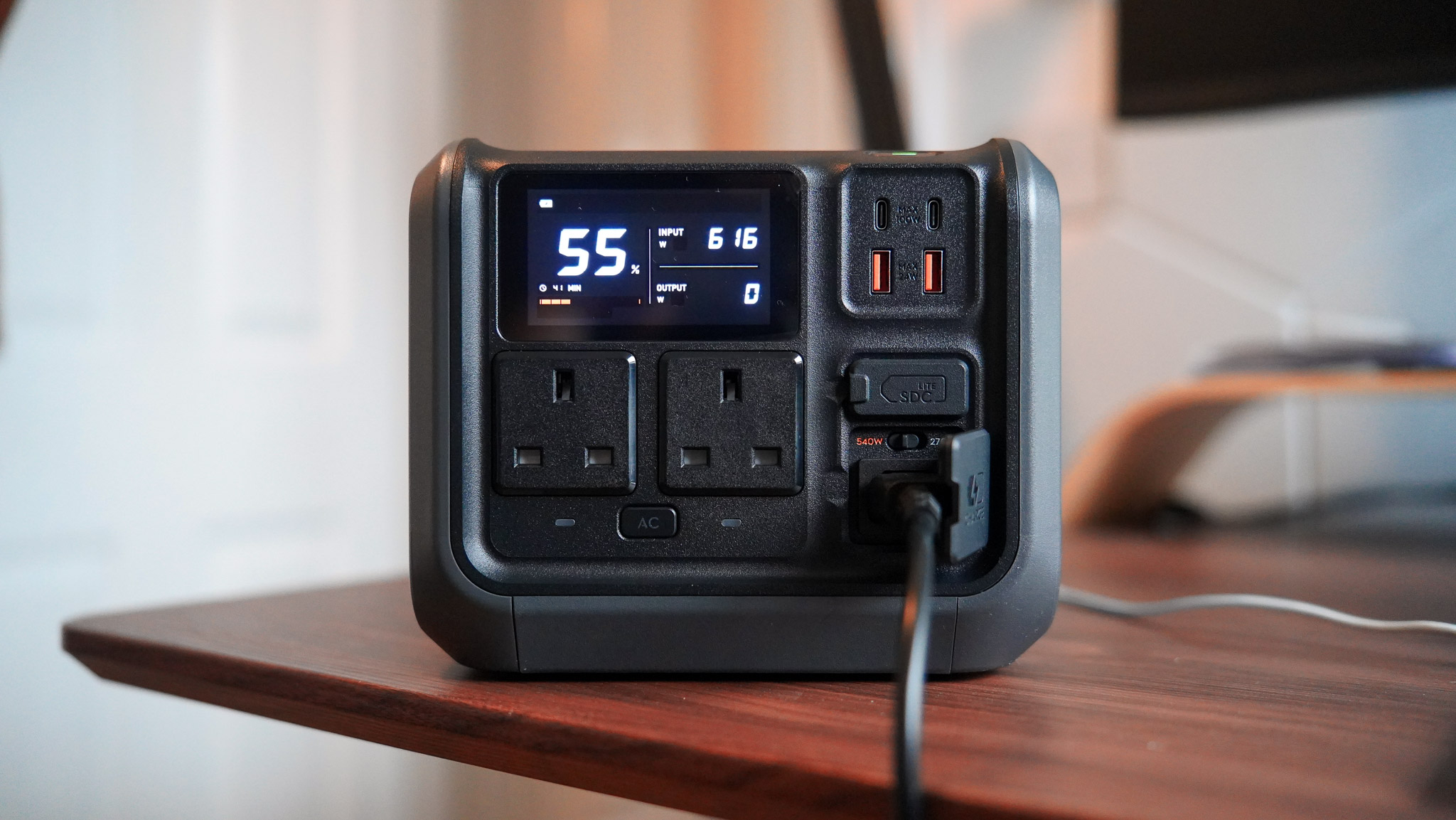
Whether you're camping, travelling, or just need reliable power on the go, the Power 500 has you covered—quietly and efficiently. With a sleek design, it boasts a user-friendly LED display and multiple ports for all your charging needs. A smart buy for digital nomads and anyone with a lot of gadgets!
-
+
Compact and portable
-
+
Whisper quiet
-
+
Information on LED is easy to understand
-
+
Optimised for DJI drone charging
-
-
Admittedly, it’s geared towards creatives and not home emergencies
-
-
MagSafe/Wireless charging would be nice
-
-
Some of the cables are extra
Why you can trust T3

Like most people, I was a bit stunned when DJI announced the Power 500 and Power 1000 power stations in April 2024. What has a drone manufacturer got anything to do with portable batteries?
But then it hit me: as a drone owner, the convenience of a DJI power station specifically designed for my drone charging needs is undeniable. Does the world need a DJI power station? For drone enthusiasts, the answer is a resounding yes.
After spending nearly a month with the smaller version, I must admit, I've developed a bit of an attachment. The Power 500, despite its unassuming size, has proven to be one of the most efficient and portable power stations I’ve ever had the pleasure of testing.
While the Power 500 may not be a one-size-fits-all solution, it's certainly a top contender for travelling creatives, particularly DJI drone pilots and content creators. If you're considering investing in a portable power station, I highly recommend reading my full DJI Power 500 review below to make an informed decision.
[First reviewed June 2024]
DJI Power 500 review
Price and availability
The DJI Power 500 was announced in April 2024 and is available to buy now directly from DJI UK, DJI US and DJI AU for a recommended price of £459/ $499/ AU$729. At the time of writing, it was on offer at DJI US, selling for only $379.
The larger DJI Power 1000 retails for £879/ $999/ AU$1,369. It’s currently also on offer in the US for $699.
Specifications
- Capacity: 512 Wh
- Max power output: 1,000 W
- Charge time (0-100%): 70 minutes in Fast Charge Mode
- Weight: 7.3 kg/ 16 Lb
- Measurements (L×W×H): 305 x 207 x 177 mm (12 x 8.14 x 6.96 in)
- Solar: up to 400W
- Outputs: 6
- Inputs: 2
- Durability: Said to maintain over 70% capacity after 4000 cycles
Design and build quality
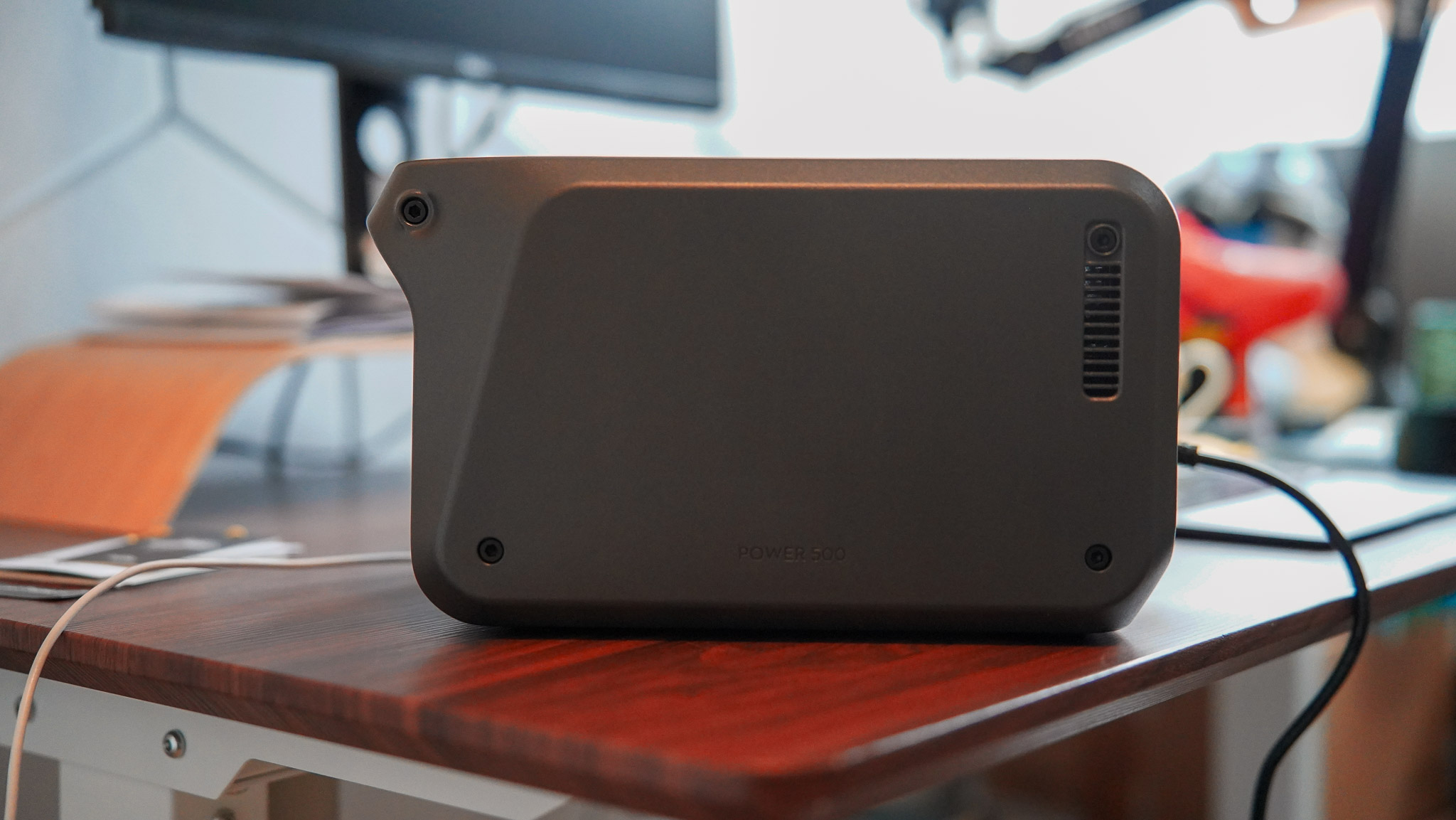
The DJI Power 500 is one of the smallest portable power stations I tested, weighing a mere 7.3 kg (16 Lb). It has a handle and can be lifted using one hand only – again, not something I’m used to from power stations.
Of the ones I recently used, the BioLite BaseCharge 1500 weighs 12kg/ 26.5 lbs and the Dabbsson DBS2300 a whopping 24.1kg/ 53.1lb. It’s worth mentioning that those have a much higher capacity than the Power 500.
The housing is made of sturdy, hard plastic; there are no creaking or ill-fitting parts. Overall, the build quality is solid. DJI claims the power station has passed 26 product test certifications from the Swiss third-party testing authority, SGS, so one hopes it’ll do the job.
Power is stored in the LFP (lithium ferrophosphate) cells and managed by the brand’s Intelligent Battery Management System. Thanks to the built-in temperature sensors, fuses, and flame-retardant, high-strength materials used for construction, the battery can maintain over 70% capacity after 4000 cycles.
All eight ports and the LED screen are located on the front of the unit. I quite liked the easy-to-read display, which clearly tells you what’s happening with the unit at any given point. It says how much energy is stored in the battery, the input and output wattage, and the remaining time until the juice runs out, based on the current circumstances.
The Power 500 does not have an IP rating (at least, I couldn’t find one), and the ports are exposed, so I wouldn’t recommend getting it wet or using it uncovered in dusty environments.
Ports
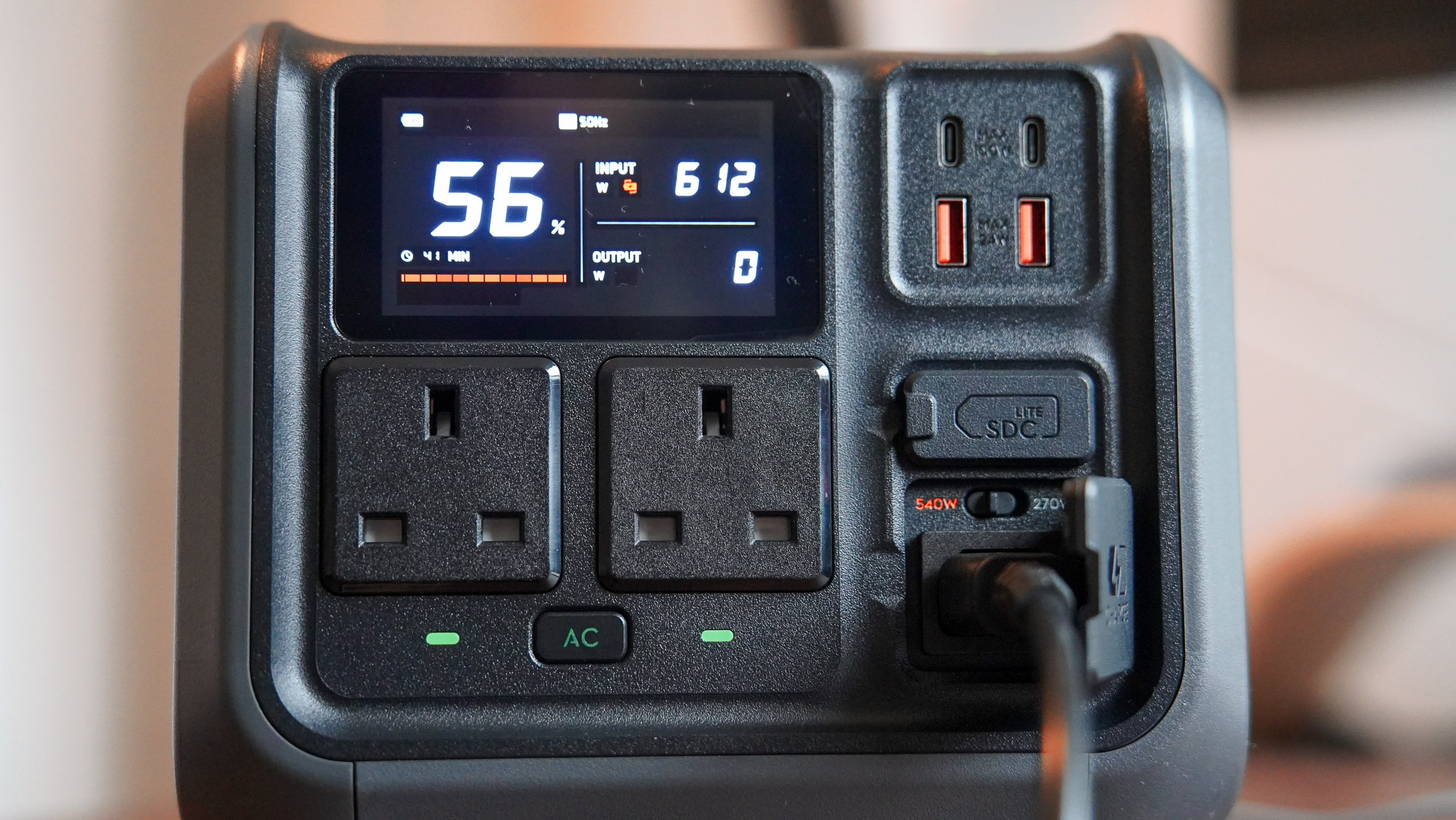
Ports require a separate section in this DJI Power 500 review, chiefly because of one of them, the SDC Lite port. In the marketing materials, DJI emphasised the Power 500’s (and Power 1000’s) capability to charge DJI drones extra fast. This is done through the SDC Lite port, which requires a separate charging cable for each type of drone.
Using the SDC Lite port, most DJI drones can be charged from 10% to 95% in around 30 minutes, which means if you have a spare battery, you can fly your UAV pretty much constantly with one battery on the charge and one in use. This is pretty cool, but it requires you to buy additional accessories for extra money, which is a bit naughty but understandable.
(According to The Verge, DJI plans to expand on the functionality of the SDC ports in the future via software updates.)
In addition to the SDC Lite port, you get an AC input (cable included in the box), two AC outputs, two USB-C inputs/outputs, and two USB-A inputs. The max output of the USB-C ports is 100W, while the USB-A ports are capped at 24W.
Charging
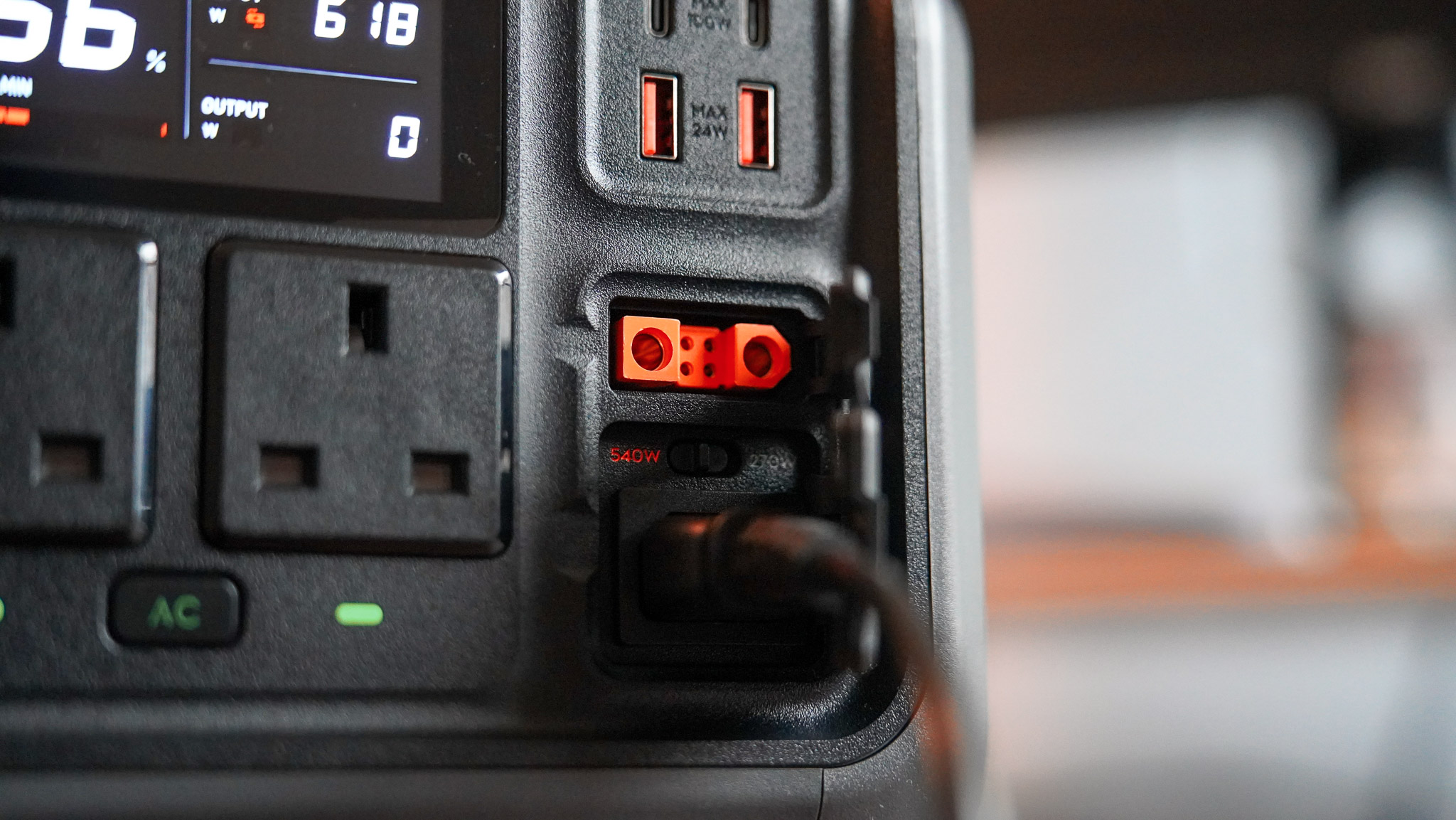
The Power 500 can be charged via the AC input and the two USB-C ports. Above the AC input port, you’ll find a switch that toggles fast charge on and off. Fast Charge doubles the wattage to 540W and can fully replenish the batteries in around 70 minutes.
There is a toggle switch instead of fast charging being the only option because fast charging puts some strain on the batteries—at least I think it does.
USB-C charging takes longer (around three hours using both ports simultaneously) and is limited to 200W (the ports can do 100W each). The larger Power 1000 hasn’t got the USB-C charging option; it’s reserved for the smaller unit only.
Performance
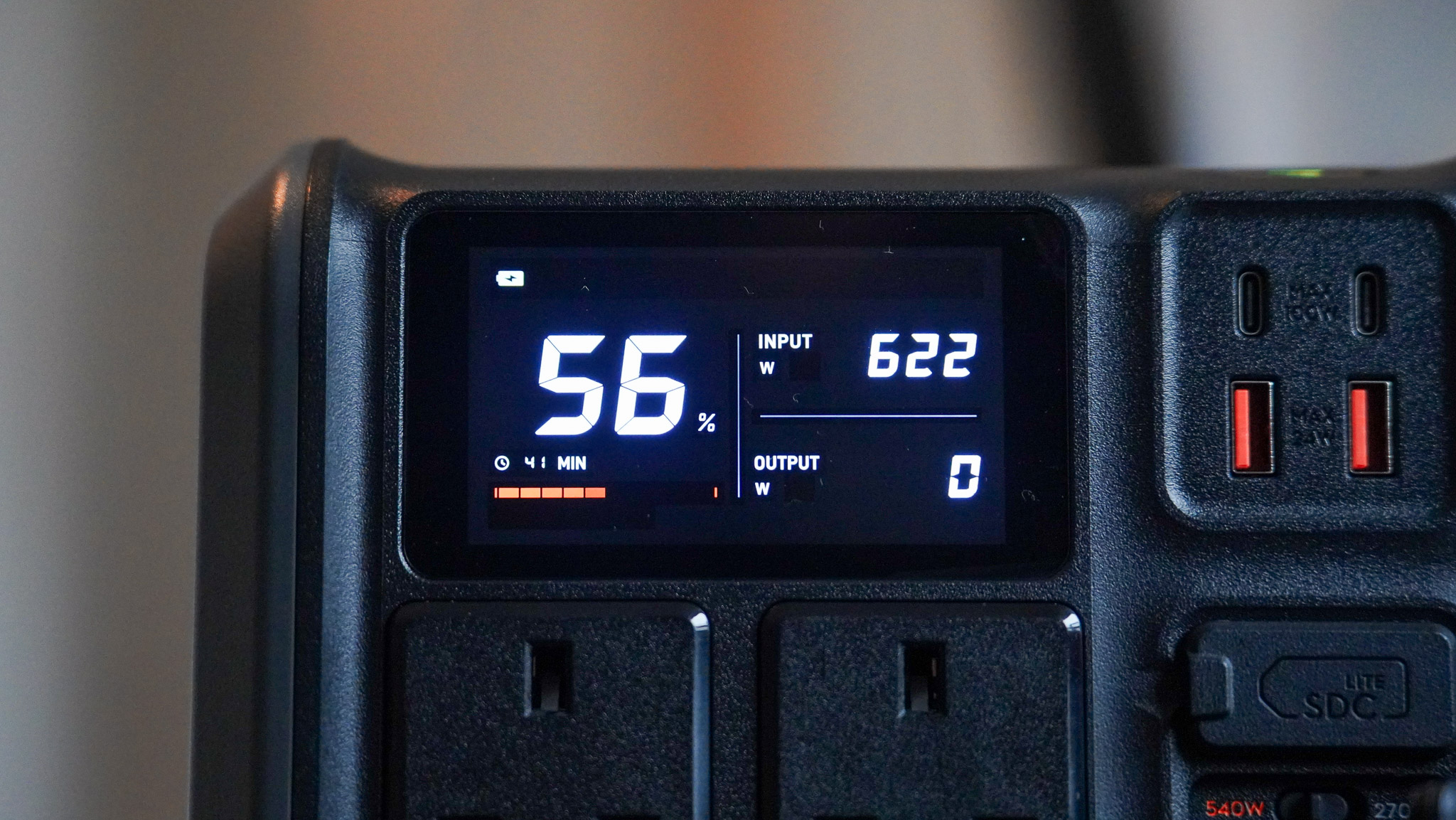
One thing that amazed me about the Power 50 is just how quiet it was. The official number is 25dB, and in reality, I hardly ever heard the unit when I used to charge my laptop and phone. It only made a sound when I fast-charged it, but it was far from loud.
The website says you can use the unit to power fridges, but I assume most people will use it to recharge their laptops/phones and other small electricals, so that’s what I focused on during testing.
I pretty much used the Power 500 exclusively for a week to power/recharge my MacBook Air M1, and it did it better than my Belkin wall charger. Unlike when using the Belkin mains charger, the MacBook never cut off when it was plugged into the Power 500.
One thing I noticed is that if any of the USB ports are in use, you can’t turn the Power 500 off. Unlike the AC ports, the USB ports haven’t got a dedicated on/off button, so they are always on. This is fine, but you must make sure you unplug your devices before turning the Power 500 off; otherwise, it’ll keep charging them until the battery runs out.
Verdict
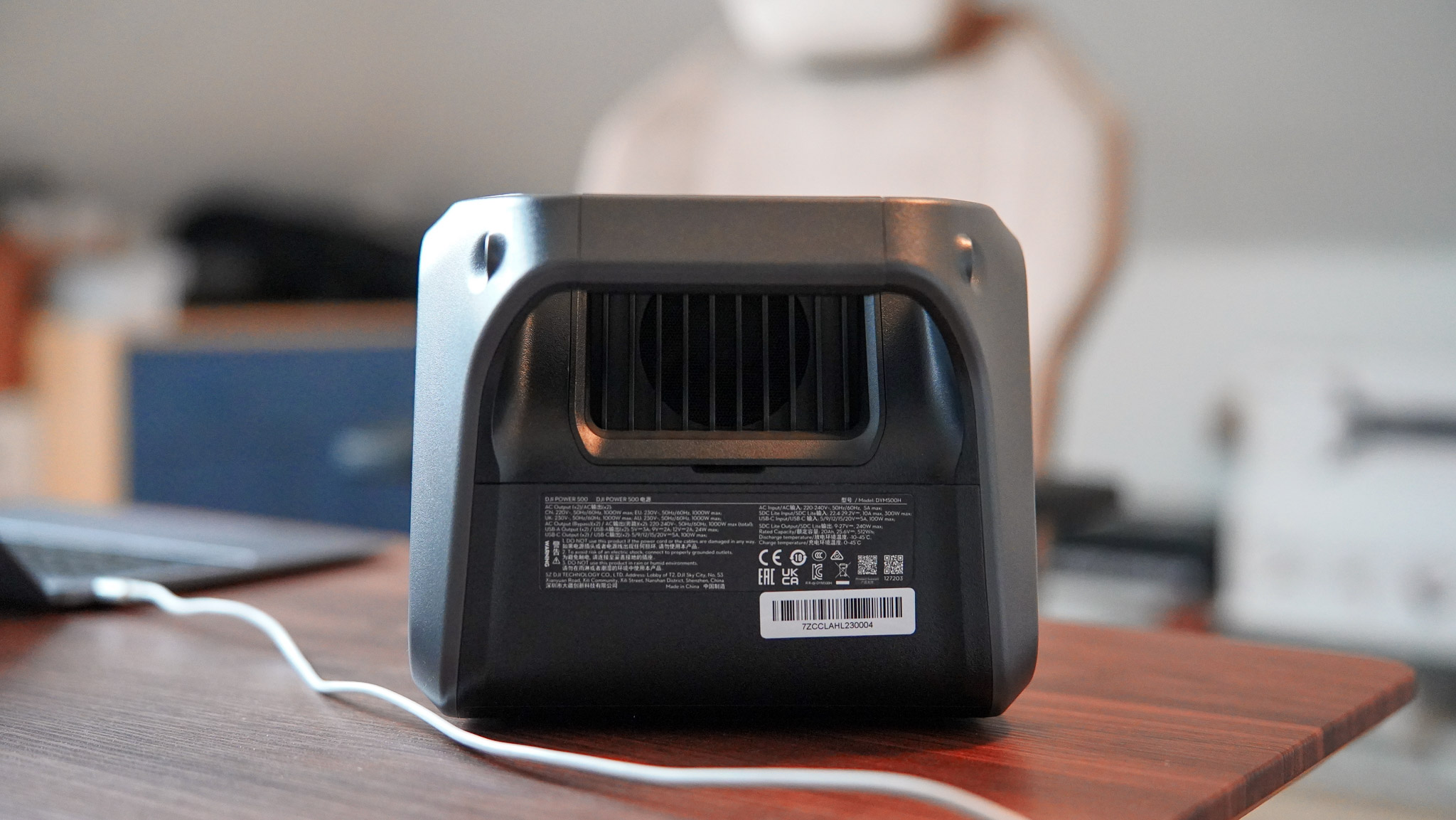
The Power 500 might seem like a left-field product from DJI, but once you consider it, it makes a lot of sense for the company to have the unit in its arsenal.
Drones are used outside and away from wall sockets, and many travelling creatives charge their batteries at power banks and power stations when out and about.
Up until now, they had to rely on third-party products; now, DJI not only offers a reliable power supply but also a way to quickly recharge DJI drone batteries. Better still, the Power 500 isn’t extremely expensive, either, although you’ll have to shell out some extra cash for the cables.
Should you get one if you aren’t a DJI drone pilot? I’d say yes, especially if you’re on the move a lot and have quite a few electronic devices to power. When a smaller power bank mighty not cut it, the Power 500 will happily – and quietly – keep your electronics going for many years to come.
Also consider
The Jackery Explorer 500 Portable Power Station (retailer link weighs just 6 kg, is easy to carry and offers 500W of power with a 1000W surge capacity, similar to the Power 500. It can charge multiple devices simultaneously, including phones, laptops, and even small appliances like mini coolers and CPAP machines. Charging options include AC, car ports, and solar panels, making it adaptable to various situations. Though it's not waterproof and lacks some modern ports like USB-C, its durability and portability make it a solid choice for outdoor enthusiasts.
Sign up to the T3 newsletter for smarter living straight to your inbox
Get all the latest news, reviews, deals and buying guides on gorgeous tech, home and active products from the T3 experts

Matt Kollat is a journalist and content creator who works for T3.com and its magazine counterpart as an Active Editor. His areas of expertise include wearables, drones, fitness equipment, nutrition and outdoor gear. He joined T3 in 2019. His byline appears in several publications, including Techradar and Fit&Well, and more. Matt also collaborated with other content creators (e.g. Garage Gym Reviews) and judged many awards, such as the European Specialist Sports Nutrition Alliance's ESSNawards. When he isn't working out, running or cycling, you'll find him roaming the countryside and trying out new podcasting and content creation equipment.
-
 Build unshakeable core strength with a kettlebell and these three exercises
Build unshakeable core strength with a kettlebell and these three exercisesAdd this to the end of your workout to fire up your midsection muscles
By Bryony Firth-Bernard Published
-
 The next big tech battlefield is AR Glasses – and Apple is ready to fight
The next big tech battlefield is AR Glasses – and Apple is ready to fightTim Cook is said to "care about nothing else"
By Sam Cross Published
-
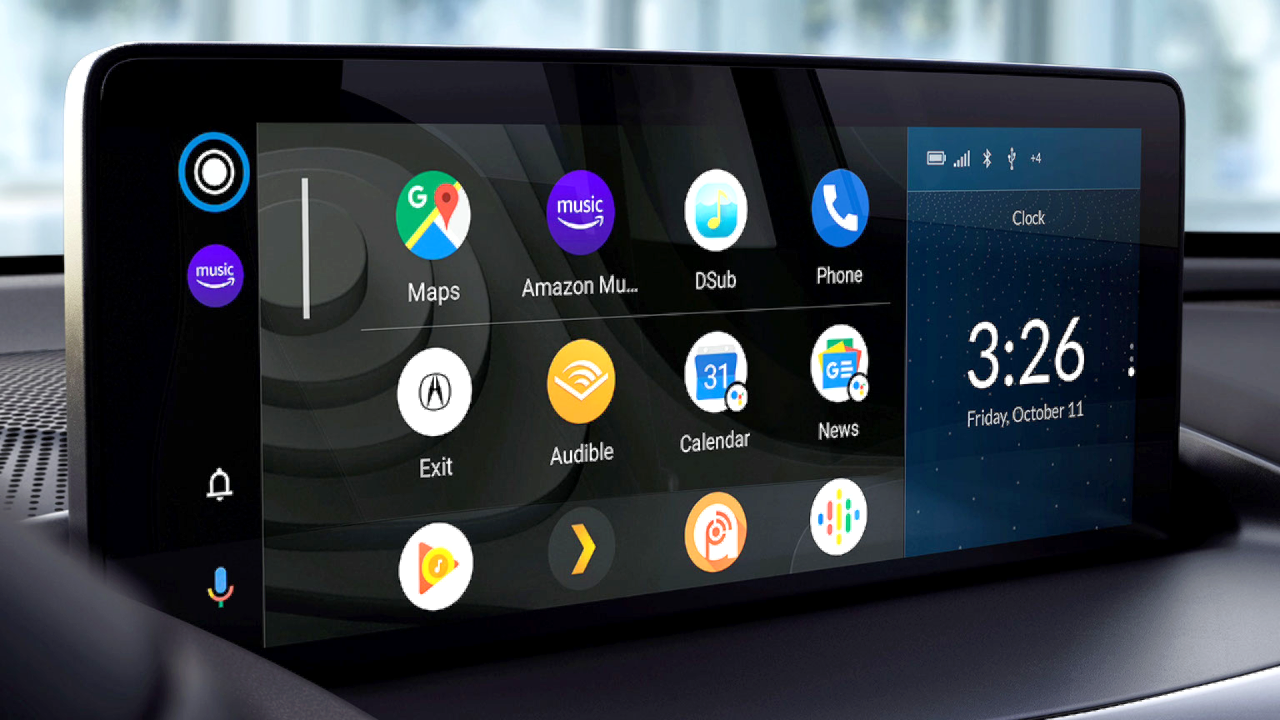 Android Auto could add a feature that nobody asked for, but might appreciate anyway
Android Auto could add a feature that nobody asked for, but might appreciate anywayThis futuristic addition to Android Auto could change the experience forever
By Chris Hall Published